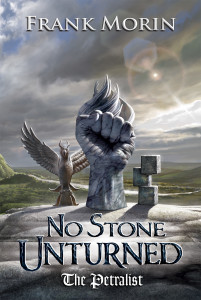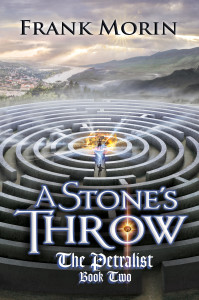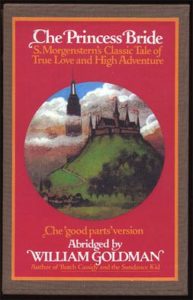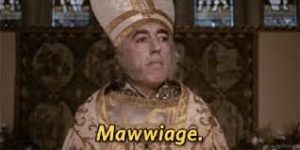Roger Ebert (may he rest in peace) famously contended that video games are not art. He acknowledged that video games could contain art within themselves, but that they, as a whole, did not constitute art. The reason? The end -user of a video game, namely the player, had too much control over what did and didn’t happen. True art, Mr. Ebert contended, was something that could only be experienced by the end-user, never directed or controlled.
Now, I know plenty of gamers who would love to challenge Mr. Ebert’s assertion, myself included. But in at least one respect video games have lagged behind “story-based” art such as books, television, and films themselves. Despite three decades of in-home gaming, there has yet to be a video game adapted into a movie that is both critically and commercially successful.
Now, as any gamer and movie-goer can tell you, this is not for lack of trying. From 2001’s Tomb Raider to 2016’s Warcraft, Hollywood is littered with video game movies that were critical failures, commercial failures, or more often, both. This despite video gaming as an industry projected to make $82 billion (with a “b”) in revenue in 2017. Put simply, the intersection between moviegoers and video gamers must be huge. There is a ton of money to be made if this pairing can be made successfully.
So why haven’t we had that breakthrough film adapting a video game yet?
In actuality, I believe there are several difficulties in adapting video game into passive viewer experiences. From most to least obvious, I’ll discuss them below.
- Many people like playing video games. Significantly fewer like watching someone else play them. Repetitive action by the player with slight variations makes up a majority of most video games’ run-time. For the gamer, this is usually fun if the game is well-designed, because they are in control. For a passive observer, not so much. So the first step of any attempt to adapt a game into a successful and artful film is to figure out which parts of the game have to get stripped out. You’ve got to compress the game to a two-hour run-time without boring people to tears OR losing the feel of what you are trying to adapt. The Last of Us is a beautiful and wrenching story of love and loss in the twilight of humankind, but a film version would still need to find the balance between just-enough and too-much stabbing of fungal-zombies.
- Story continues to be secondary in many games. Now this only makes sense. The goal of a game is to provide the player with an enjoyable interactive experience. Telling them a story is generally secondary. While some people (me again) will almost always prefer a game with a well-written story (and there are plenty of those now), many are just looking for an escapist good time with endless replay value and the chance to pretend-kill their friends online. With some notable exceptions, most video games did not expend much effort on a meaningful story until relatively recently (and even now, many still don’t bother). This doesn’t mean that games can’t be adapted into quality films, but it does narrow the field of possible candidates quite a bit. But surely a movie based on the board game Battleship can be green-lit, Hollywood can do better in the video game adaptation department.
- Video games are waiting for their champion. This one came to me after Sam Raimi successfully adapted Spider Man into a successful and critically acclaimed movie. At around the same time, Peter Jackson knocked it out of the park with the Lord of the Rings trilogy, which Frank Morin will be discussing later in the month as Evan Braun tackles his more complicated The Hobbit trilogy of films. What did these two filmmakers have in common? They were both huge fans of the subject matter they were adapting. And that’s what the coming breakthrough video game movie is going to need, a talented director who grew up loving video games and has a special one close to their heart that they are going to make into a film if it kills them. The problem with video games (as opposed to classic fantasy or comic books) is that the medium hasn’t been around long enough for those directors to really come of age. But do the math with me. It’s been just over thirty years (ugh) since the Nintendo Entertainment System took the home-gaming world by storm. An entire generation of directors who grew up playing video games is just entering the height of their careers. All it’s going to take is the right pairing of director and project.
And that’s where we’re going to wrap things up. Make no mistake, the time of the video game blockbuster film that wows critics is coming, and it’s coming soon. And there are so many games to choose from. The Last of Us has a more emotionally moving story than most movies I’ve seen. With the revivals of both Star Wars and Star Trek, the Mass Effect universe is just begging for a cinematic franchise. Ditto for Dragon Age. Bioshock: Infinite is the very definition of a game whose mind-bending story of parallel universes is better than its gameplay.
So take heart, fellow gamers who watch with envy as every single comic book character is adapted for film. It won’t be long now.
About the Author: Gregory D. Little
Rocket scientist by day, fantasy and science fiction author by night, Gregory D. Little began his writing career in high school when he and his friend wrote Star Wars fanfic before it was cool, passing a notebook around between (sometimes during) classes. His first novel, Unwilling Souls, is available now from ebook retailers and trade paperback through Amazon.com. His short fiction can be found in The Colored Lens, A Game of Horns: A Red Unicorn Anthology, and the upcoming Dragon Writers Anthology. He lives in Virginia with his wife and their yellow lab.
You can reach him at his website (www.gregorydlittle.com), his Twitter handle (@litgreg) or at his Author Page on Facebook.
 Some days it’s fun to simply celebrate a big milestone.
Some days it’s fun to simply celebrate a big milestone.
 Frank Morin loves good stories in every form. When not writing or trying to keep up with his active family, he’s often found hiking, camping, Scuba diving, or enjoying other outdoor activities. For updates on upcoming releases of his popular Petralist YA fantasy novels, or his fast-paced Facetakers sci-fi time travel thrillers, check his website: www.frankmorin.org
Frank Morin loves good stories in every form. When not writing or trying to keep up with his active family, he’s often found hiking, camping, Scuba diving, or enjoying other outdoor activities. For updates on upcoming releases of his popular Petralist YA fantasy novels, or his fast-paced Facetakers sci-fi time travel thrillers, check his website: www.frankmorin.org








